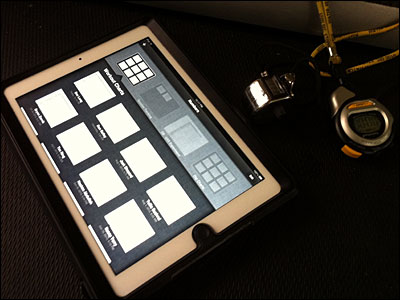Question: What are the most important pieces of exercise equipment someone should have in their gym?
Answer: A clipboard and pencil; every other piece of equipment is interchangeable with something else or expendable.
There is no single piece of exercise equipment that is more important or more effective than any other in the long run for getting as strong and conditioned as your genetics will allow. As long as you are using them correctly and you can eventually achieve the same degree of physical improvement training with any types and any particular pieces of exercise equipment from the most high-tech machines to barbells to the simplest bodyweight training equipment. Every type of equipment and every particular piece has pros and cons and some will be better for some people under some circumstances, but ultimately the results you get from exercise have far more to do with how you train than what equipment you train with.
No matter what you use, though, if you want to get the best possible results from your workouts you have to start by designing a program based on your goals and current physical condition and abilities, and you have to adjust your program based on your body’s response to exercise. To do this effectively you need to keep accurate records of your workouts and of goal-specific measurements like body weight and composition, body part circumferences, physical performance and/or medical tests, health evaluations, etc. so can objectively evaluate your progress and the results of any changes you make to your workouts.

Every time you work out you should record the date of the workout to track your training frequency for future reference. Your chart should list the standard protocol used for each exercise, including the repetition cadence and target repetition ranges. You should record the weight and the number of repetitions completed in good form (sloppy reps don’t count) or the time under load (TUL) for each exercise, as well as the use of any different repetition methods or techniques. If you perform the exercises out of the usual order, you should record that as well, marking the sequence in a small box in the upper right corner of the weight and repetitions box.
If you are prioritizing cardiovascular and metabolic conditioning you should record your heart rate before and during your workout, and two minutes after the last exercise to track heart rate recovery, and compare this to changes in the total workout time. If you are doing this I also recommend tracking TUL instead of the repetition count, along with the start and end time of your workouts so you can determine the cumulative TUL, total workout time, and work to rest ratio or “density” of work to compare over time.
If you’re performing bodyweight workouts you should record your current bodyweight since it factors into the difficulty of the exercises, as well as the difficulty level used for the exercise if you’re using a bodyweight training progression system like the one in Project Kratos.
You should also make notes below the workout on your chart or in a separate journal marked with the workout date on anything significant that occurred before, during, or after that would be important for future evaluation. For example, changes in diet, or activity levels, or the effects of the workout or particular exercises on the symptoms of a physical condition or injury, or simply how you felt during and after the workout.

Of course, you don’t have to use a clipboard and pencil, as long as you use something to keep track of your workouts in a way that is well-organized and makes it easy to compare workouts over time. Years ago I stopped using paper charts and started tracking all of my clients’ workouts on an iPad using a spreadsheet app, which is much more time and space efficient. I would like to be able to recommend apps specifically dedicated to tracking workouts, but so far I haven’t seen any workout tracking apps that are designed to do everything they should.
If you’re not already tracking your workouts you need to start now, and you can do so using the free workout charts on this web site. If you’ve got comments or questions about tracking workouts post them below.

Comments on this entry are closed.
Drew:
I would love to get your spreadsheet template for tracking workouts electronically. If you use Excel or compatible another compatible spreadsheet, would you be willing to share it with us?
Hey Fred,
I am using the Numbers app for iPhone and iPad. It’s a very simple template, but always evolving. I will write another article on how I set this up for those interested.
I couldn’t agree more. I still have my records from when I started, back in 1978. That Zane inspired routine didn’t do much, no wonder why at 5 days a week and 12 sets per muscle! But it’s fond nostalgia from my past.